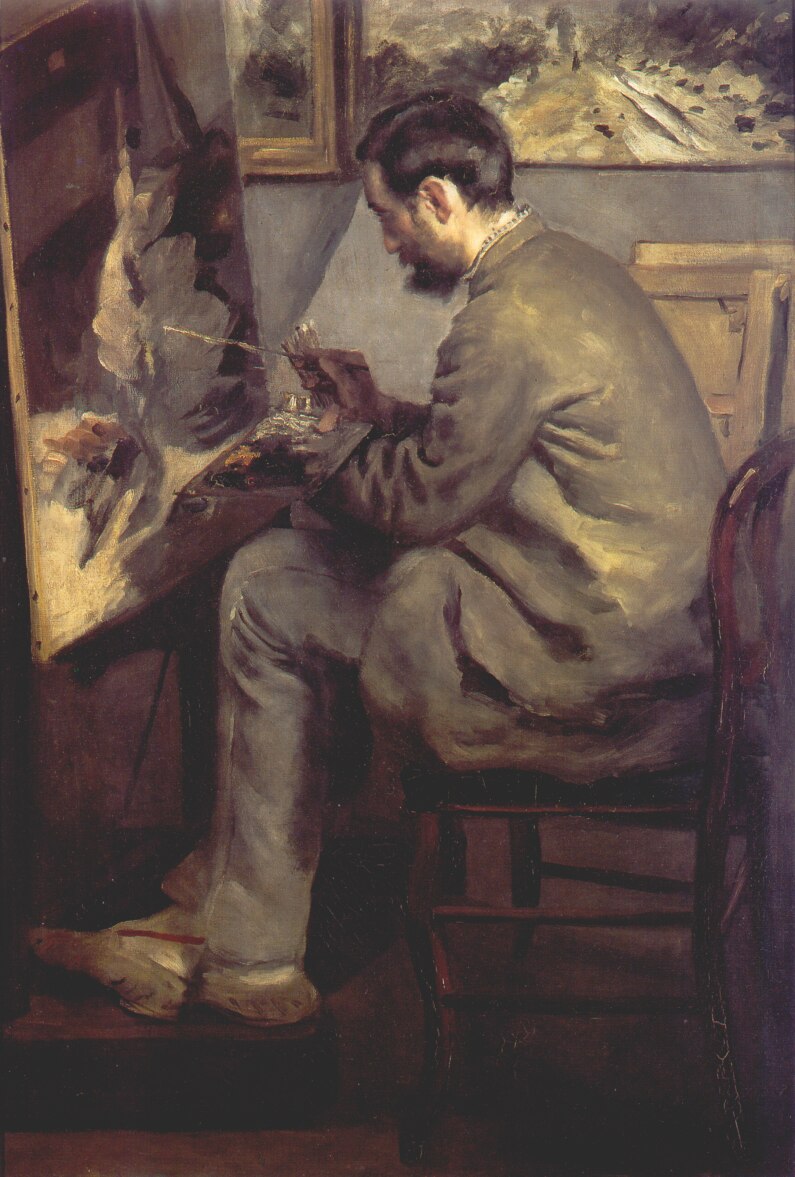art-Renoir.com
Auguste Renoir 1841-1919
Auguste Renoir - Frederic Bazille painting the Heron 1867
 Frederic Bazille painting the Heron |
From Musee d'Orsay, Paris:
Beyond being a simple portrait, this painting conceals the presence of the five original principal figures of Impressionism: Frédéric Bazille (1841-1870), Alfred Sisley (1839-1899), Claude Monet (1840-1926) and Renoir, as well as their great elder, Edouard Manet (1832-1883).
They come together in the studio in the rue Visconti in Paris, which Bazille, wealthier than his peers, willingly shared with them. One day in 1867, Sisley and Bazille found themselves opposite a still life of a heron and two or three sparrows, placed on a white cloth on a table – the two resulting paintings are now kept at the Musée Fabre in Montpellier. While his friends worked, Renoir captured Bazille at work. Wanting also to pay tribute to Monet, he places a snow scene on the wall, probably Road to Saint Siméon Farm in Winter (private collection). Monet responded quickly to this reference by painting Renoir's portrait, now in the Musée d'Orsay. Manet, although not featured in the painting, is associated with it, as he later owned Renoir's painting.
The figure of Bazille stands out against a disparate collection of paintings covering the studio wall, some facing outwards, some towards the wall. During that same period, notably in his portrait of Emile Zola (1868, Musée d'Orsay), Manet also used the juxtaposition of figurative elements in some of his backgrounds. The dominant colours of grey and beige are also reminiscent of Manet. They intensify the rare splashes of another colour in the painting: the red lace of his espadrilles, an indication of the intimate atmosphere of the studio, the light paint near the edge of the palette, or the pink of the face, invaded by the shadow.